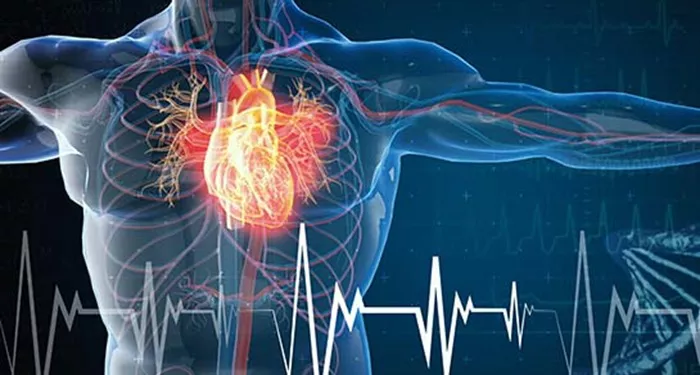Cardiac decompensation refers to the inability of the heart to maintain adequate blood circulation, leading to a cascade of symptoms and potential complications. It often occurs in individuals with pre-existing heart conditions such as heart failure, coronary artery disease, or valvular heart disease. Recognizing the signs of cardiac decompensation is crucial for timely intervention and management. In this article, we will delve into the various signs and symptoms that may indicate cardiac decompensation, along with their implications and potential treatment strategies.
What Is Cardiac Decompensation?
Before delving into the signs of cardiac decompensation, it’s essential to understand the underlying mechanisms and contributing factors.
Cardiac decompensation occurs when the heart’s pumping ability is compromised, leading to inadequate delivery of oxygen and nutrients to vital organs and tissues. This can result from various factors such as:
Heart Failure: A condition where the heart is unable to pump blood effectively, leading to fluid buildup in the lungs (pulmonary edema) or other parts of the body (peripheral edema).
Coronary Artery Disease (CAD): Narrowing or blockage of the coronary arteries, reducing blood flow to the heart muscle and impairing its function.
Valvular Heart Disease: Malfunctioning heart valves that disrupt normal blood flow and increase the workload on the heart.
SEE ALSO: how to treat cardiac cough
Signs And Symptoms of Cardiac Decompensation
Shortness of Breath (Dyspnea): One of the hallmark symptoms of cardiac decompensation is sudden or worsening shortness of breath, especially during physical activity or when lying flat (orthopnea). This occurs due to fluid accumulation in the lungs, leading to difficulty in breathing.
Fatigue and Weakness: Patients experiencing cardiac decompensation often report increased fatigue and weakness, even with minimal exertion. This can be attributed to reduced oxygen delivery to muscles and tissues.
Swelling (Edema): Fluid retention in the body can lead to swelling, particularly in the legs, ankles, feet, and abdomen. This is known as peripheral edema and is a common manifestation of heart failure and cardiac decompensation.
Persistent Cough: A chronic or persistent cough, especially with frothy or pink-tinged sputum, may indicate fluid buildup in the lungs (pulmonary edema) due to heart failure.
Rapid Heart Rate (Tachycardia): An elevated heart rate, particularly at rest or with minimal exertion, can be a sign of cardiac decompensation as the heart works harder to compensate for reduced pumping efficiency.
Chest Discomfort: Patients may experience chest pain or discomfort, often described as a pressure or squeezing sensation.
This can occur due to reduced blood flow to the heart muscle (ischemia) or strain on the heart.
Difficulty Sleeping (Paroxysmal Nocturnal Dyspnea): Waking up suddenly at night with difficulty breathing or a feeling of suffocation can indicate fluid accumulation in the lungs, a common feature of cardiac decompensation.
Increased Urination at Night (Nocturia): Patients may notice an increase in urination at night, which can be a result of fluid retention during the day that is mobilized when lying down.
Decreased Exercise Tolerance: Individuals with cardiac decompensation often experience a decline in exercise tolerance, finding it challenging to engage in physical activities they could previously tolerate.
Complications And Risk Factors
Failure to recognize and address cardiac decompensation promptly can lead to serious complications, including:
Acute Heart Failure: Sudden worsening of heart failure symptoms requiring immediate medical attention.
Arrhythmias: Irregular heart rhythms that can lead to palpitations, dizziness, or fainting.
Organ Damage: Inadequate blood flow can damage vital organs such as the kidneys, liver, and brain.
Cardiogenic Shock: A severe condition where the heart’s pumping ability is critically impaired, requiring intensive care and support.
Several risk factors contribute to the development of cardiac decompensation, including uncontrolled high blood pressure, diabetes, obesity, smoking, sedentary lifestyle, and a history of heart disease or heart attacks.
Diagnosis And Treatment
Diagnosing cardiac decompensation typically involves a combination of medical history review, physical examination, imaging tests (such as echocardiography), blood tests (including brain natriuretic peptide, or BNP), and electrocardiogram (ECG) monitoring. Once diagnosed, treatment aims to improve heart function, alleviate symptoms, and prevent complications. This may include:
Medications: Prescribed to manage heart failure symptoms, reduce fluid retention, lower blood pressure, and improve heart function. These may include diuretics, ACE inhibitors, beta-blockers, and vasodilators.
Lifestyle Modifications: Encouraging a heart-healthy lifestyle with regular exercise, a balanced diet low in sodium and saturated fats, weight management, smoking cessation, and alcohol moderation.
Medical Procedures: In severe cases, procedures such as coronary artery bypass grafting (CABG), heart valve repair or replacement, implantation of cardiac devices (pacemakers, defibrillators), or heart transplantation may be considered.
Conclusion
Recognizing the signs of cardiac decompensation is crucial for early intervention and improved outcomes in individuals with underlying heart conditions. Patients and healthcare providers should remain vigilant for symptoms such as shortness of breath, fatigue, swelling, and chest discomfort, seeking prompt medical attention when necessary. With appropriate diagnosis, treatment, and ongoing management, the impact of cardiac decompensation can be minimized, allowing individuals to lead healthier and more fulfilling lives.

